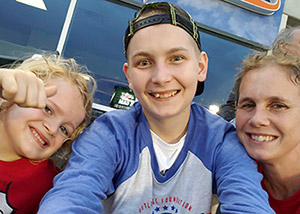There are two primary ways to treat germ cell tumors:
- Surgery to remove the tumor tissue
- Chemotherapy to attack the remaining tumor cells
Surgery
The location of the tumor may influence the need or possibility for surgery. When possible, the first choice is to try and remove the entire tumor. Complete surgical removal can be enough to cure most teratomas and immature teratomas.
Surgery alone can also cure some testicular and ovarian malignant germ cell tumors. For testicular germ cell tumors, successful surgery may make chemotherapy unnecessary. If the disease has not spread to the lymph nodes, and if the levels of tumor marker proteins decrease to normal after surgery, there may be no need for chemotherapy.
In older boys, a biopsy of lymph nodes in the abdomen may be needed to determine whether the disease has spread.
Chemotherapy
Chemotherapy has been successful in curing some germ cell tumors. Standard chemotherapy includes four to six rounds of treatment known as PEB that includes:
- Cisplatin (P)
- Etoposide (E)
- Bleomycin (B)
- In some cases, carboplatin, ifosfamide, and vinblastine are also used
Boys who have had testicular tumors removed completely by surgery may be monitored without chemotherapy. If tumor marker levels fail to return to normal or rise after surgery during the follow-up period, chemotherapy is then used with good results. This is sometimes called “salvage chemotherapy” because it can get rid of tumor cells that were not completely removed by surgery.
Radiation
Patients with other malignant germ cell tumors may also receive radiation. As treatment proceeds, tumor marker levels are monitored. The purpose is to shrink the tumor as much as possible, after which surgeons will try to remove any tumor tissue that remains.

